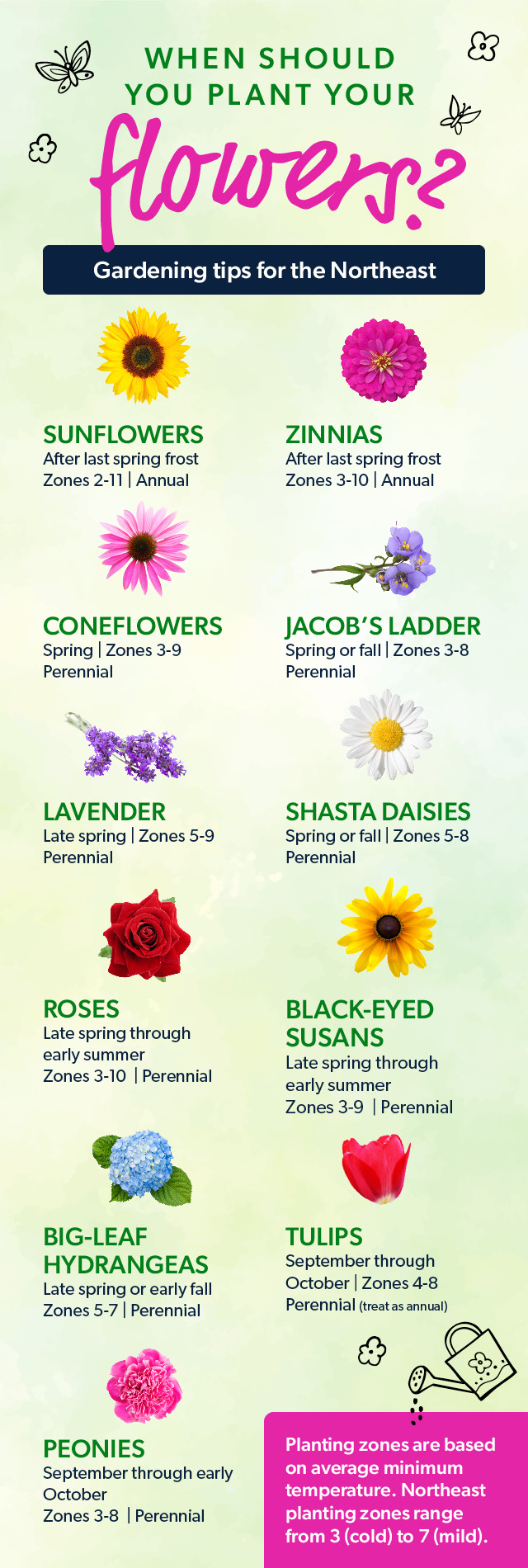Creating a vibrant and flourishing flower garden is a rewarding experience, bringing beauty and joy to your outdoor space. However, timing is crucial for success. Knowing when to plant your flowers is essential for ensuring healthy growth, abundant blooms, and a garden that thrives throughout the season. This guide provides a comprehensive overview of the best times to plant various types of flowers, taking into account your local climate and specific plant needs. Let’s delve into the details and unlock the secrets to a stunning flower garden!
Understanding Planting Seasons
The optimal time to plant flowers depends largely on whether they are annuals or perennials, and on your local climate. Understanding the difference between these two types of plants is the first step.
- Annuals: These flowers complete their life cycle in one growing season, blooming profusely but needing to be replanted each year.
- Perennials: These flowers live for more than two years, often returning year after year with even more impressive displays.
Planting Annuals
Annuals are generally planted after the last frost in spring. However, some cool-season annuals can be planted earlier.
- Warm-Season Annuals: Wait until the soil has warmed up and all danger of frost has passed. Examples include petunias, zinnias, and marigolds.
- Cool-Season Annuals: These can tolerate light frost and can be planted earlier in spring or even in late summer for fall blooms. Examples include pansies, violas, and snapdragons.
Planting Perennials
Perennials can be planted in spring or fall, depending on your climate. Fall planting allows the roots to establish before winter, leading to stronger growth in the spring.
Consider these factors when deciding when to plant perennials:
- Climate: In colder climates, spring planting is often preferred to avoid winter damage to young plants.
- Plant Type: Some perennials, like peonies, benefit from fall planting.
- Availability: Nurseries often have a wider selection of perennials in the spring.
Regional Considerations
Your geographic location plays a significant role in determining the best planting times. Consult local resources, such as your county extension office, for specific recommendations for your area.
Factoid: Did you know that the USDA Plant Hardiness Zone Map can help you determine which plants are most likely to thrive in your region? This map divides North America into zones based on average minimum winter temperatures.
Warm Climates
In warmer climates, you may have a longer growing season, allowing for multiple planting windows throughout the year. Some flowers can even be planted in the winter.
Cool Climates
In cooler climates, the growing season is shorter, so timing is even more critical. Start seeds indoors to get a head start on the season.
Soil Preparation
Regardless of when you plant, proper soil preparation is essential for healthy flower growth. Amend the soil with compost or other organic matter to improve drainage and fertility.
Factoid: Soil testing can help you determine the pH level and nutrient content of your soil, allowing you to make informed decisions about amendments and fertilization.
FAQ: Planting Flower Gardens
Q: When is the best time to plant sunflowers?
A: Sunflowers are warm-season annuals and should be planted after the last frost in spring, when the soil has warmed up.
Q: Can I plant flowers in the summer?
A: Yes, you can plant flowers in the summer, especially heat-tolerant annuals and perennials. However, be sure to provide adequate water and shade during the hottest part of the day.
Q: How do I protect my flowers from frost?
A: Cover your plants with blankets or sheets when frost is predicted. You can also use frost cloths or cold frames for added protection.
Q: What are some easy-to-grow flowers for beginners?
A: Some easy-to-grow flowers for beginners include marigolds, zinnias, cosmos, and sunflowers.
Q: How often should I water my flowers?
A: The frequency of watering depends on the type of flower, the weather, and the soil. Generally, water deeply when the top inch of soil feels dry.
Choosing the Right Flowers
Selecting the right flowers for your garden is just as important as planting them at the right time. Consider your local climate, soil conditions, and personal preferences when making your selections.
Factors to Consider:
- Sunlight: How much sunlight does your garden receive? Choose flowers that thrive in the available light conditions.
- Soil Type: Is your soil sandy, loamy, or clay? Select flowers that are well-suited to your soil type.
- Water Needs: How much time are you willing to spend watering your flowers? Choose drought-tolerant varieties if you prefer a low-maintenance garden.
- Bloom Time: Consider the bloom time of different flowers to ensure a continuous display of color throughout the growing season.
- Color Palette: Choose colors that complement each other and create a visually appealing garden.
Ongoing Care and Maintenance
Once your flowers are planted, ongoing care and maintenance are essential for keeping them healthy and vibrant. This includes watering, fertilizing, deadheading, and pest control.
Essential Maintenance Tasks:
- Watering: Water regularly, especially during dry periods. Water deeply and less frequently to encourage deep root growth.
- Fertilizing: Fertilize your flowers regularly with a balanced fertilizer to provide them with the nutrients they need.
- Deadheading: Remove spent flowers to encourage continued blooming.
- Pest Control: Monitor your plants for pests and diseases and take appropriate action to prevent or control them.
- Weeding: Regularly remove weeds to prevent them from competing with your flowers for resources.
Mulching for Success
Applying a layer of mulch around your plants can help retain moisture, suppress weeds, and regulate soil temperature. Organic mulches, such as wood chips or straw, also decompose over time, adding nutrients to the soil.
Enjoying Your Flower Garden
With careful planning and attention to detail, you can create a stunning flower garden that brings beauty and joy to your outdoor space for years to come. Take the time to relax and enjoy the fruits of your labor!

